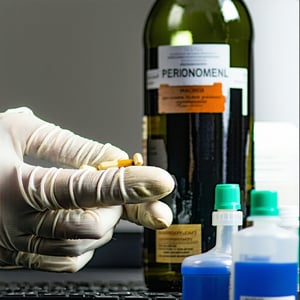/140442584-1600x400.jpg?width=300&name=140442584-1600x400.jpg)
THE DANGERS OF SMOKING, DRUGS & ALCOHOL IN THE WORKPLACE
Workers under the influence of alcohol or unauthorised drugs in the workplace are a danger to themselves and to their co-workers. Smoking can also present an immediate danger, in relation to flammable or explosive substances, as well as long-term health damage.
Alcohol, drugs, and smoking must all be dealt with in a tactful, but compelling manner, to ensure the safety of all employees and to comply with legislation.
Control of Smoking in the Workplace
Smoking should be banned in all your work areas. In addition, where considered appropriate, areas such as car parks, company vehicles, balconies and areas immediately adjacent to your buildings may also be declared as no-smoking areas.
If considered necessary to provide designated smoking areas, these should be clearly marked and located so that your other personnel are not exposed to environmental tobacco smoke. Smoking areas should not be within designated Hazardous Areas, where flammable gases or dusts may be present.
If designated smoking areas are located in an enclosed space, they should be provided with adequate means of extraction and ventilation. Care should be taken to ensure that other personnel, outside the designated smoking area, are not exposed to the extracted tobacco smoke.
Drivers and passengers in vehicles carrying dangerous goods by road and rail should not possess matches or cigarette lighters, or smoke in the vehicle.
The Use of Alcohol and Drugs
The use, on your company premises, of alcohol and drugs, other than medically authorised drugs, should be banned.
Senior managers may authorise the moderate consumption of alcohol during social functions, provided it does not impair the ability of personnel to perform their work or to return home safely following the function.
Personnel should not attend work under the influence of drugs or alcohol.

Alcohol and Drug Testing
If considered necessary, random or as-required testing may be instituted. This may include testing for alcohol or for drugs such as marijuana, heroin, cocaine, etc. Testing should be conducted in all instances where it is required by legislation.
A person’s fitness for work can be ascertained by means of:
- voluntary self-testing;
- random testing before starting or during work;
- testing the person if it is reasonably suspected that he or she is under the influence of drugs to the extent that it impairs their ability to safely carry out their duties.
Any testing should be conducted in accordance with documented procedures. The decision to conduct testing and the development of the procedures should be done in consultation with your workers and workplace health and safety representatives.
Your managers should also be advised that positive test results may not be conclusive, considering:
- if an employee refuses to be tested it is not in itself evidence that the person is under the influence of alcohol or drugs; and
- the reliability of test outcomes can be challenged in relation to its accuracy.
Results of any such testing should be kept confidential.
Education and Awareness
An awareness programme to explain the dangers of drug and alcohol abuse, particularly as it relates to safety and occupational health, should be initiated. In addition, counselling and the appropriate treatment should be made available to employees.
Download Your Free Checklist PDF
Get instant access to our expert-designed checklist to help you. Simply fill out the form below to download your copy.Need Support Managing WHS Risks in Your Workplace?
Learn how our consulting services can help you address safety challenges with practical, people-focused solutions.SIMILAR READINGS

3.5 min read
3.5 min read
Learn how to effectively manage the fatigue of your workers...

2 min read
2 min read
When employing somebody under the age of 15, these steps...
Read More
2 min read
2 min read
Meet your obligations for monitoring and reducing workplace...

3 min read
3 min read
Limiting the spread of infectious, communicable diseases...
Read More